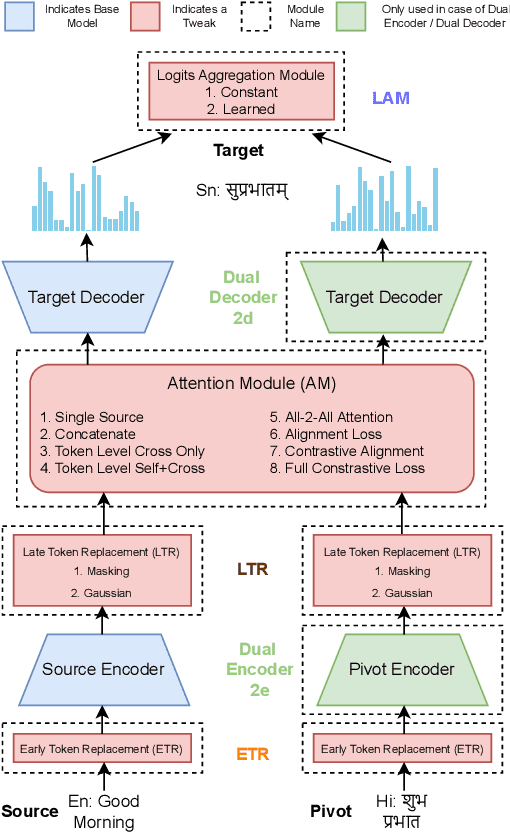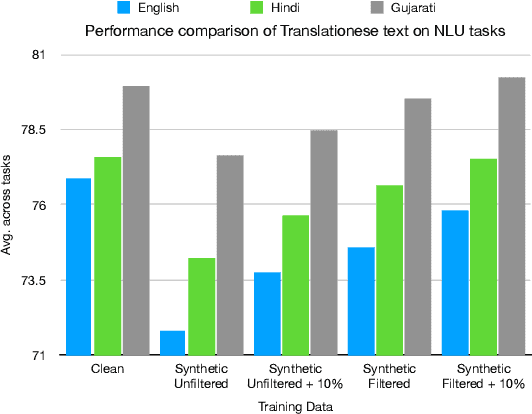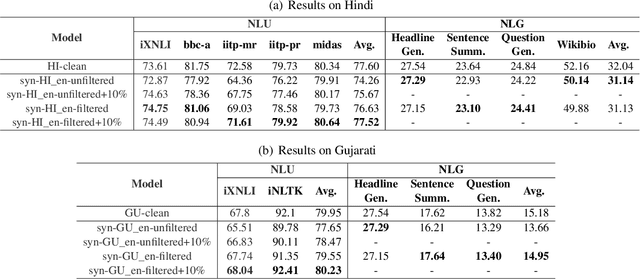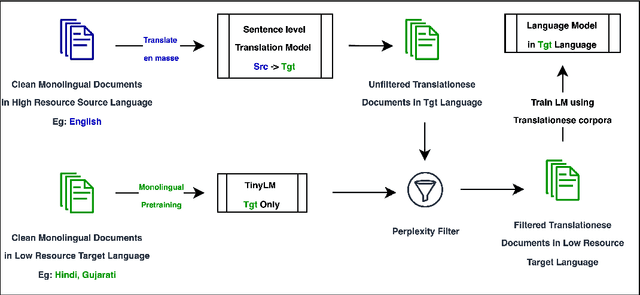Meet Doshi
Mistral-SPLADE: LLMs for better Learned Sparse Retrieval
Aug 22, 2024Abstract:Learned Sparse Retrievers (LSR) have evolved into an effective retrieval strategy that can bridge the gap between traditional keyword-based sparse retrievers and embedding-based dense retrievers. At its core, learned sparse retrievers try to learn the most important semantic keyword expansions from a query and/or document which can facilitate better retrieval with overlapping keyword expansions. LSR like SPLADE has typically been using encoder only models with MLM (masked language modeling) style objective in conjunction with known ways of retrieval performance improvement such as hard negative mining, distillation, etc. In this work, we propose to use decoder-only model for learning semantic keyword expansion. We posit, decoder only models that have seen much higher magnitudes of data are better equipped to learn keyword expansions needed for improved retrieval. We use Mistral as the backbone to develop our Learned Sparse Retriever similar to SPLADE and train it on a subset of sentence-transformer data which is often used for training text embedding models. Our experiments support the hypothesis that a sparse retrieval model based on decoder only large language model (LLM) surpasses the performance of existing LSR systems, including SPLADE and all its variants. The LLM based model (Echo-Mistral-SPLADE) now stands as a state-of-the-art learned sparse retrieval model on the BEIR text retrieval benchmark.
How effective is Multi-source pivoting for Translation of Low Resource Indian Languages?
Jun 19, 2024



Abstract:Machine Translation (MT) between linguistically dissimilar languages is challenging, especially due to the scarcity of parallel corpora. Prior works suggest that pivoting through a high-resource language can help translation into a related low-resource language. However, existing works tend to discard the source sentence when pivoting. Taking the case of English to Indian language MT, this paper explores the 'multi-source translation' approach with pivoting, using both source and pivot sentences to improve translation. We conducted extensive experiments with various multi-source techniques for translating English to Konkani, Manipuri, Sanskrit, and Bodo, using Hindi, Marathi, and Bengali as pivot languages. We find that multi-source pivoting yields marginal improvements over the state-of-the-art, contrary to previous claims, but these improvements can be enhanced with synthetic target language data. We believe multi-source pivoting is a promising direction for Low-resource translation.
Do Not Worry if You Do Not Have Data: Building Pretrained Language Models Using Translationese
Mar 21, 2024



Abstract:In this paper, we explore the utility of Translationese as synthetic data created using machine translation for pre-training language models (LMs). Pre-training requires vast amounts of monolingual data, which is mostly unavailable for languages other than English. Recently, there has been a growing interest in using synthetic data to address this data scarcity. We take the case of English and Indic languages and translate web-crawled monolingual documents (clean) into the target language. Then, we train language models containing 28M and 85M parameters on this translationese data (synthetic). We show that their performance on downstream natural language understanding and generative tasks is only 3.56% poorer on NLU tasks and 1.51% on NLG tasks than LMs pre-trained on clean data. Further, we propose the use of lightweight TinyLMs pre-trained on clean data to filter synthetic data efficiently which significantly improves the performance of our models. We also find that LMs trained on synthetic data strongly benefit from extended pretraining on a tiny fraction (10%) of clean data. We release the data we collected and created as a part of this work, IndicMonoDoc, the largest collection of monolingual document-level corpora, which we hope will help bridge the gap between English and non-English performance for large language models.
PUB: A Pragmatics Understanding Benchmark for Assessing LLMs' Pragmatics Capabilities
Jan 13, 2024Abstract:LLMs have demonstrated remarkable capability for understanding semantics, but they often struggle with understanding pragmatics. To demonstrate this fact, we release a Pragmatics Understanding Benchmark (PUB) dataset consisting of fourteen tasks in four pragmatics phenomena, namely, Implicature, Presupposition, Reference, and Deixis. We curated high-quality test sets for each task, consisting of Multiple Choice Question Answers (MCQA). PUB includes a total of 28k data points, 6.1k of which have been created by us, and the rest are adapted from existing datasets. We evaluated nine models varying in the number of parameters and type of training. Our study indicates that fine-tuning for instruction-following and chat significantly enhances the pragmatics capabilities of smaller language models. However, for larger models, the base versions perform comparably with their chat-adapted counterparts. Additionally, there is a noticeable performance gap between human capabilities and model capabilities. Furthermore, unlike the consistent performance of humans across various tasks, the models demonstrate variability in their proficiency, with performance levels fluctuating due to different hints and the complexities of tasks within the same dataset. Overall, the benchmark aims to provide a comprehensive evaluation of LLM's ability to handle real-world language tasks that require pragmatic reasoning.
 Add to Chrome
Add to Chrome Add to Firefox
Add to Firefox Add to Edge
Add to Edge